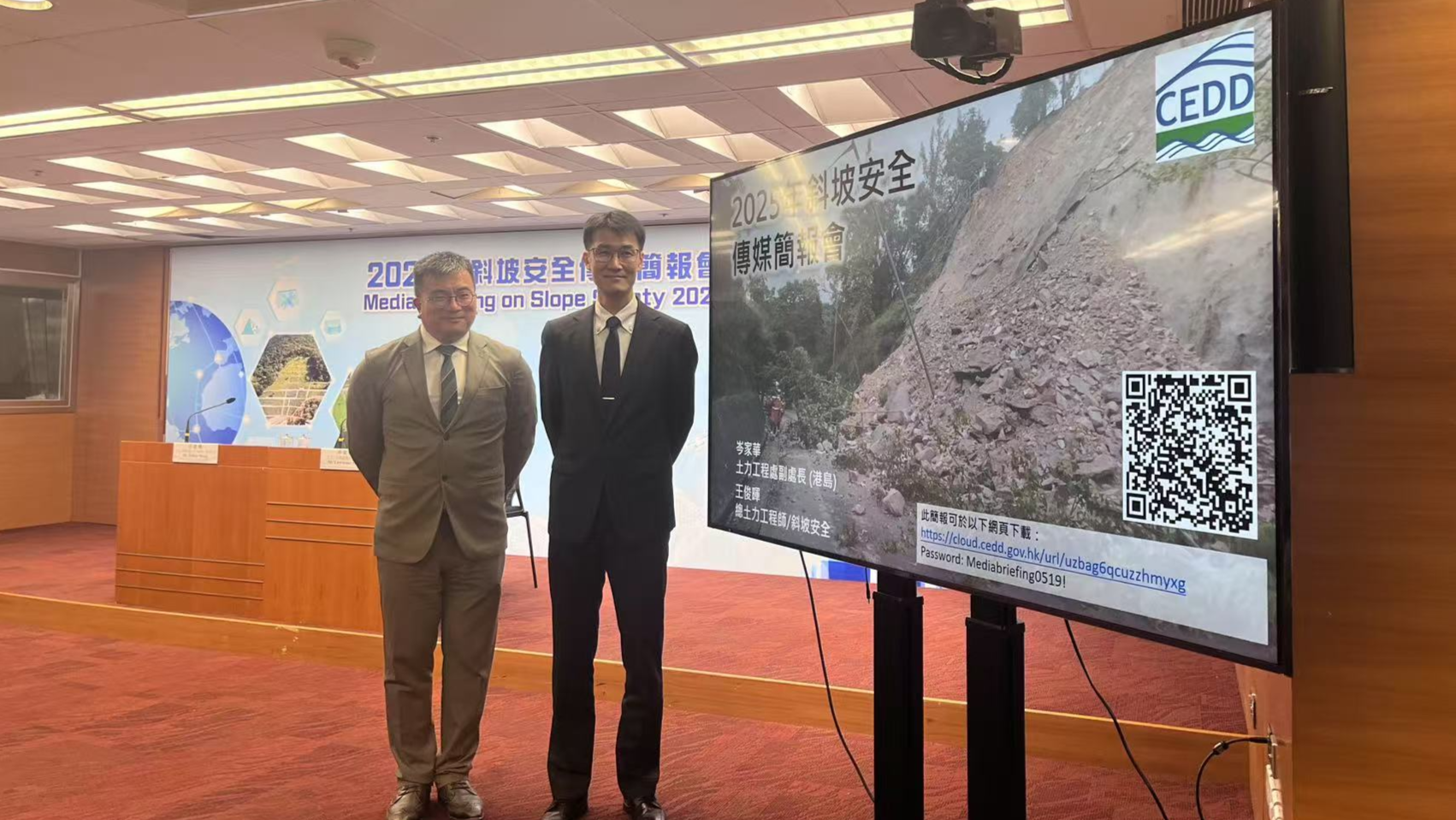
Hong Kong is deploying autonomous drones, warning systems powered by artificial intelligence (AI) technologies, and expanded databases to bolster landslide risk management and emergency response, as part of a comprehensive strategy to tackle extreme weather challenges.
Lawrence Shum Ka-wah, deputy head of the Geotechnical Engineering Office who oversees slope safety measures on Hong Kong Island, highlighted the initiatives during a media briefing on Monday, emphasizing that the integration of advanced technology and big data analysis is critical for maintaining slope safety.
Starting later this year, Shum said the office will test autonomous drones equipped with light detection and ranging scanners, thermal infrared cameras, and AI-powered analytics through two low-altitude economy regulatory sandbox pilot projects, applying the drones in scenarios such as engineering management, slope monitoring and emergency response.
READ MORE: HK readies for extreme weather as flooding, landslide incidents rise
He said the drones can conduct real-time surveillance of remote or hazardous areas to support construction management by tracking site conditions and generating as-built drawings; they can also patrol slopes and disaster-prevention works following pre-programmed routes, or use AI to swiftly identify landslide locations after heavy rainfall.
Shum added that during emergencies the drones can fly above traffic or damaged roads to assess risks, collect environmental data, and aid rescue operations, enabling faster decision-making and recovery efforts.
In addition, the office has developed an AI-driven landslide prediction model using historical data on rainfall, slopes and landslides. Shum said system — slated for testing during the upcoming wet season — has been designed to improve risk assessments and refine the accuracy of landslide warnings.
In 2024, Hong Kong recorded 181 landslides — a significant drop from 601 incidents in 2023 and below the 35-year average of 300 — because there were relatively few exceptionally heavy downpours and the total precipitation level reached 2,309.7 millimeters, approximately five percent less than the average value of 2,431.2 mm observed from 1991 to 2020.

A new edition of the special landslip advisory, listing areas that are at higher risk of landslides during heavy rains, will also be issued ahead of the rainy season to improve public safety awareness.
The office is also upgrading its slope database, integrating maintenance records, rainfall patterns, and landslide history to optimize mitigation priorities and maintenance audits.
Following the severe landslides triggered by record rainfall in September 2023, Shum said the office underwent a process systematically reviewing mitigation strategies, prioritizing the analysis of natural terrain near critical infrastructure and sole-access roads.
READ MORE: PM classes suspended, landslide reported as heavy rains batter HK
Shum noted that the government’s Landslip Prevention and Mitigation Programme will conduct more work over the next three years, starting this year with boosting the overall safety of slopes during extreme weather.
The number of mitigation projects targeting natural slopes will be increased from 30 to 40 every year, and the number of reinforcement works carried out by the government to manage artificial slopes will be increased from 150 to 200 every year.
The risk-assessment screenings for privately managed artificial slopes under the program will also be increased from 100 to 130 per year.
Contact the writer at stephyzhang@chinadailyhk.com


